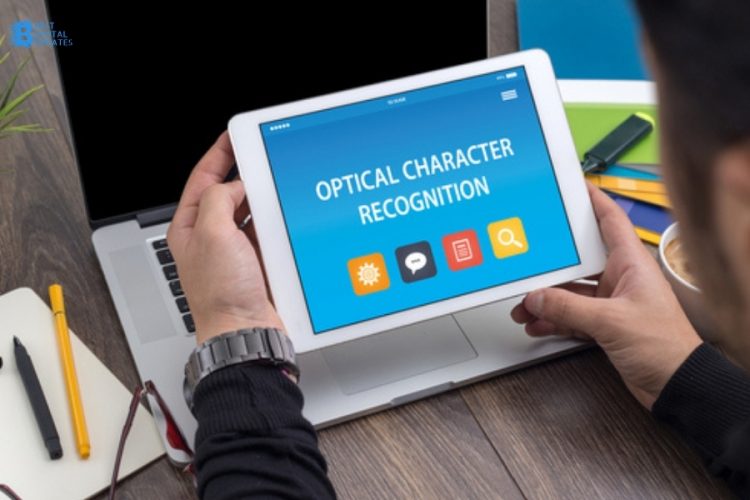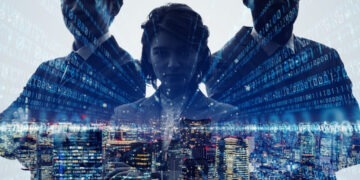Because of the availability of the internet, consumers prefer to buy things online. Enterprises, therefore, need to place their products where they can find their potential buyers. According to a study, 70% of businesses either digitally transforming or in the process of it.
The main challenge businesses face today is to embrace technology by removing existing systems. The most effective method for merchants to transform digitally is by relying on technology that could fit better into existing technology. Optical Character Recognition OCR is one such technology that could help businesses in digitizing data.
Optical Character Recognition is the technology that converts papered-based documents into images, extracts text, and converts it into machine-readable. The OCR engine then automatically transforms it into searchable digital format.
By adopting this technology, enterprises can simplify routine tasks like customer onboarding, handling account sheets, digitizing scanned documents, and similar tasks.
Growth of Digital Transformation
Table of Contents
Before the advent of technology, it was impossible for businesses to incorporate perfect data extraction technology. However, OCR solutions solved this problem. Online service providers can digitize data by extracting information through an AI-powered OCR app.
The advancement in technology is not only transforming the way businesses operate but are also changing the way organizations interact with their customers. Consumers have high hopes for online businesses and expect to have a fast, seamless experience.
Companies are trying to reduce manual efforts by adding automated software to the system. This can be achieved through artificial intelligence, robotic process automation, and optical character recognition.
What is OCR Technology?
Optical Character Recognition uses machine learning, computer vision, and natural learning program to read the text in documents and give detailed results to users. By looking at the text, type, and other specific details on the documents, OCR engines create a deep understanding report of the document and the data within. AI Optical Character Recognition engine tries to minimize human efforts for making corrections in paper-based documents.
OCR engines use artificial intelligence and optical character recognition programs to convert scanned documents into a machine-readable and digital data format. It reads the document in the form of an image and interprets its characters and converts them into searchable and editable data.
How Does It Work?
The process of optical character recognition comprises 3 basic steps:
- Pre-processing
- Extraction
- Post-processing
1. Pre-processing
Pre-processing involves further 4 steps:
-
Cleaning
In this stage, the document captured in poor lighting conditions is adjusted by the software to create uniform light qualities. Distortion from the data can be removed by detecting borders.
-
Deskewing
In a regular document, the text is present in a straight line. But not all the pages hold this perfection level in text format. The binding of books sometimes also raises above the scanner’s glass capture. Deskewing helps such cases by straightening the text lines.
-
Reduces Shake and Increases Sharpness
Not all the images are captured from high-quality cameras and by experts. There are chances that images may be a blur. Pre-processing increases the sharpness of the images.
-
Normalization
The last step of pre-processing normalizes all the distortion created in the image during earlier steps.
2. Extraction
The second step of OCR is called extraction and is completed in 2 steps:
-
Segmentation
Sometimes the documents hold the text that is present in some styled fonts. Segmentation works on the and eventually recognizes the characters.
-
Feature Extraction
It is the process of learning curves, lines, and similar in papered documents. OCR engines replace feature extraction with deep learning without the aid of humans.
3. Post Processing
The last step involves the use of machine learning. After extracting text from documents it recognizes text in fonts, styles, and different types of data.
Also Raed: Research on the Stability of 10G SFP+ LR Optical Module
Types of Documents From Where Data Can Be Extracted
Text can be extracted from various types of scanned documents through the OCR engine. Some types of documents are the following:
- Structured documents like government-issued IDs, passports, driving licenses, and credit cards possess a pre-determined format and are uniformly designed.
- Unstructured documents like photos, social media content, and handwritten notes are not always present in the same format rather they are designed based on the needs of the process
- Multilingual documents are the ones that contain more than one language. For instance, government-issued ID cards that contain letters, numbers, and MRZ codes.
- OCR engines can also extract information from user-provided URLs (Google Drive, Dropbox, etc) of the documents.
Conclusion
Optical Character Recognition OCR screening reflects the methods of extracting information from scanned documents. It is an automated technology that helps businesses to minimize manual labor by digitizing data. Various types of documents holding different forms of data can be processed by OCR services to convert data into digital format.




















